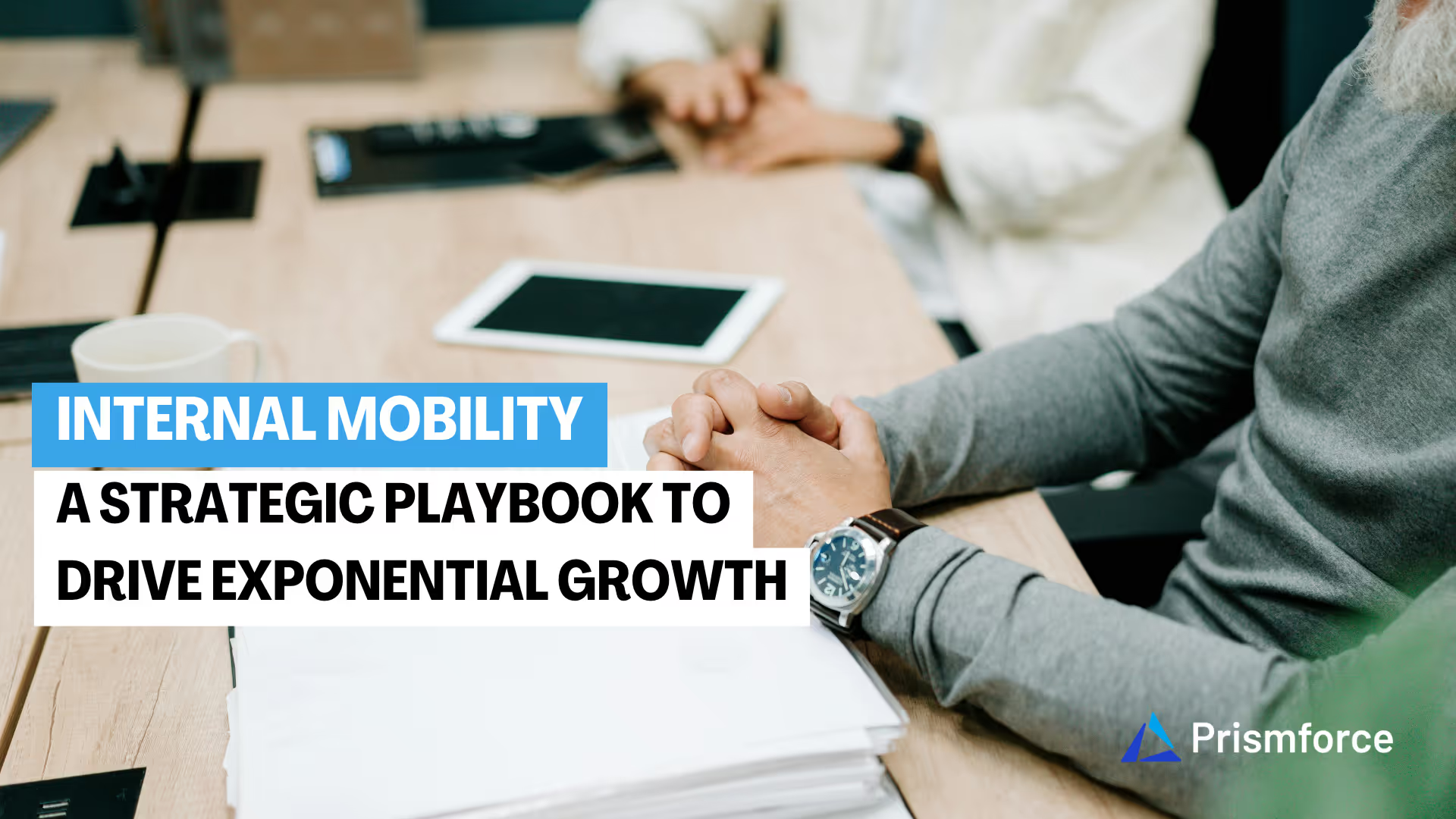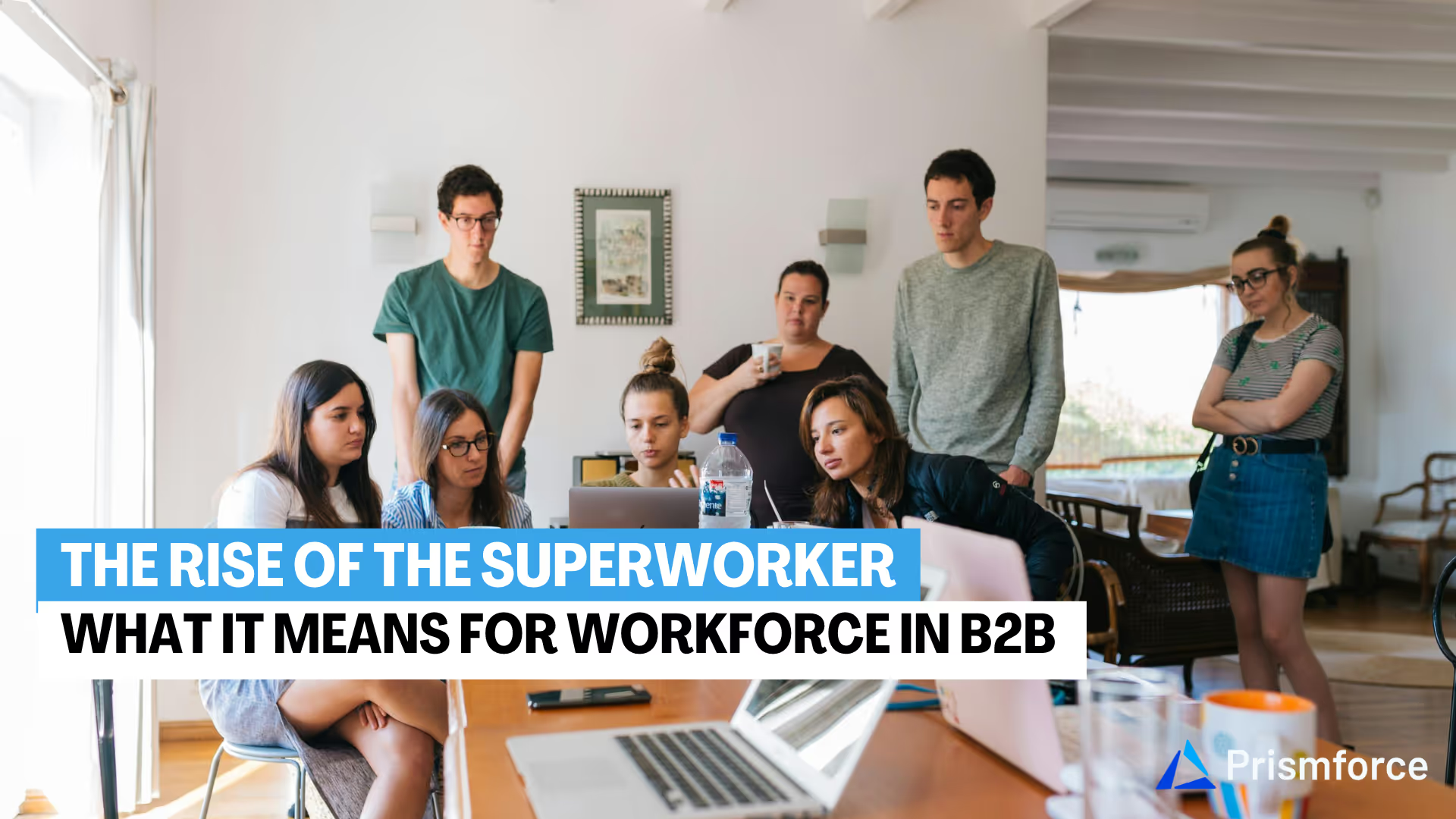
Understanding Internal Mobility in the Workplace
Internal mobility will be a game changer in the coming decade for industries of all sizes, and in this blog post, we are going to see exactly how.
Finding and retaining top talent has always been on top of the priority list for almost all of the best organizations in the world. If you are an HR leader reading this, you know how difficult it is. Until a few years ago, employees were expected to stick to their job roles, no matter if they were interested in expanding their horizons or exploring other roles within the same organization. But all that is changing, thanks to growing talent shortages and shifting consumer expectations.
Wiley put out a report recently called Closing the Skills Gap, which had 69% of HR professionals surveyed in the US admitting that their organization had a skills gap. This number is up from 55% in 2021.
As the numbers indicate, skills shortage is a real thing, and the best way forward for organizations may be to look inward. Without further ado, let’s look at what internal mobility is and how it plays an important role.
What is Internal Mobility?
Internal mobility refers to the strategic movement of employees within an organization, enabling them to explore new roles, responsibilities, and career paths. It may include various forms, including lateral moves, promotions, temporary assignments, and job rotations.
This dynamic approach to talent management empowers employees to continually develop their skills, broaden their knowledge, and contribute to the organization's success in diverse ways.
At its core, internal mobility is a powerful tool that aligns individual growth aspirations with organizational objectives, fostering a symbiotic relationship where both parties thrive. By providing employees with opportunities to explore new horizons within the company, organizations can unlock untapped potential, cultivate a culture of continuous learning, and drive innovation from within.
Why Internal Mobility Matters to Companies?
Giving your employees the flexibility to move across different roles within the organization is a WN-WIN, as we are going to explore in this next section.
Talent Retention:
Internal mobility plays a pivotal role in talent retention by providing employees with opportunities for growth and development within the organization. When employees perceive a clear path for career advancement and skill enhancement, they are more likely to remain engaged and committed to the company, reducing costly turnover rates. Take this study from the Work institute on employee retention as an example, which said that nearly one-fourth of the employees (24%) leave an organization because they don’t see future opportunities.
Cost Savings:
Hiring and onboarding new employees can be a significant expense for organizations. By leveraging internal mobility, companies can fill vacancies and address skill gaps from within, minimizing the costs associated with external recruitment, training, and onboarding processes. According to a Linkedin’s Workplace learning report, 79% of L&D leaders agree that it is less expensive to reskill an existing employee than it is to hire a new one.
Organizational Knowledge Preservation:
Experienced employees possess invaluable institutional knowledge, industry insights, and valuable relationships that are critical to an organization's success. Internal mobility enables the transfer and preservation of this knowledge, ensuring that it is not lost when employees leave the company.
Improved Employee Engagement:
When employees perceive opportunities for growth and development within their organization, they are more likely to feel valued, motivated, and engaged. This heightened engagement translates into increased productivity, better customer service, and a stronger commitment to the company's success.
Fostering Innovation:
Internal mobility promotes cross-functional collaboration and knowledge sharing, exposing employees to diverse perspectives and experiences. This exchange of ideas and insights can spark innovation, driving the development of new products, services, and processes that propel organizational growth.
By recognizing the importance of internal mobility, companies can unlock the full potential of their workforce, cultivate a culture of continuous learning, and position themselves for long-term success in an ever-changing business environment.
Benefits of Internal Mobility
Embracing internal mobility as a strategic approach to talent management yields numerous benefits for both employees and organizations. By fostering an environment that encourages growth, development, and career progression within the company, organizations can unlock a wealth of advantages that contribute to their overall success.
Enhanced Employee Engagement and Retention:
- Internal mobility provides employees with opportunities for professional growth and career advancement, fostering a sense of fulfillment and job satisfaction.
- Employees who perceive a clear path for advancement within the organization are more likely to remain engaged and committed, reducing costly turnover rates.
Talent Development and Skill Diversification:
- Internal mobility exposes employees to diverse roles, responsibilities, and experiences, enabling them to develop a broader range of skills and competencies.
- This cross-functional exposure fosters a more versatile and adaptable workforce, better equipped to navigate the ever-changing business landscape.
Improved Organizational Knowledge and Expertise:
- By facilitating the movement of employees across different departments and roles, internal mobility promotes the sharing and dissemination of knowledge and expertise throughout the organization.
- This cross-pollination of ideas and perspectives can drive innovation, foster collaboration, and enhance the organization's overall intellectual capital.
Cost Savings and Efficiency:
- Filling vacancies and addressing skill gaps through internal mobility can significantly reduce the costs associated with external recruitment, onboarding, and training.
- Internal candidates often require less ramp-up time and possess valuable organizational knowledge, contributing to increased efficiency and productivity.
Succession Planning and Leadership Development:
- Internal mobility provides a structured approach to identifying and developing future leaders within the organization.
- By exposing high-potential employees to diverse roles and responsibilities, companies can cultivate a robust leadership pipeline, ensuring seamless transitions and continuity in critical positions.
Increased Employee Loyalty and Commitment:
- Organizations that prioritize internal mobility demonstrate a commitment to their employees' professional growth and development.
- This commitment fosters a sense of loyalty and dedication among employees, strengthening their emotional connection to the company and its mission.
By embracing internal mobility as a strategic imperative, organizations can unlock a multitude of benefits that contribute to their long-term success, fostering a culture of continuous learning, driving innovation, and positioning themselves as an employer of choice in a highly competitive talent landscape.
Internal Mobility Examples
Internal mobility manifests in various forms within organizations, providing employees with diverse opportunities for growth and development. Here are some examples of internal mobility initiatives:
Job Rotation Programs:
Employees are given the chance to rotate through different roles and departments within the organization, gaining exposure to diverse functions and acquiring new skills. This approach not only enhances employee development but also promotes cross-functional collaboration and knowledge sharing.
Unilever, the multinational consumer goods company, is known for its effective internal mobility program. Their "Flex Experiences" initiative allows employees to temporarily work in different roles, departments, or locations. This program enhances skill development, cross-functional knowledge, and career growth. Employees can take on short-term assignments lasting from a few weeks to several months, gaining diverse experiences within the company. This approach helps Unilever retain talent, improve employee engagement, and create a more versatile workforce. The program has been praised for fostering innovation and helping employees discover new career paths within the organization.
Lateral Moves:
Employees can transition to different roles at the same level within the organization, allowing them to explore new challenges, expand their expertise, and gain fresh perspectives without necessarily advancing in hierarchy.
Google's "gDesign Your Career" program promotes lateral moves through open transfers, an internal job board, "Rotation" projects, and manager support. Employees can easily explore new opportunities and grow their careers within the company.
Stretch Assignments:
Employees are temporarily assigned to projects or roles that stretch their current capabilities, providing them with opportunities to develop new skills and gain valuable experience outside their primary responsibilities.
Netflix is a prime example of a company that excels in internal mobility through stretch assignments. They often assign employees to roles that are significantly different from their current ones, challenging them to learn new skills and broaden their perspectives. This approach has led to numerous internal promotions and successful career trajectories for Netflix employees.
Internal Job Postings:
Organizations actively promote internal job openings, encouraging employees to apply for new roles and positions within the company. This approach fosters transparency, facilitates career progression, and ensures that internal talent is leveraged before external recruitment efforts.
Spotify is known for its effective use of internal job postings to facilitate internal mobility. They maintain a transparent and accessible internal job board where employees can easily search for and apply to open positions across the company. This system encourages employees to explore new opportunities and fosters a culture of continuous growth and development.
Mentorship and Coaching Programs:
Experienced employees serve as mentors or coaches, sharing their knowledge and expertise with colleagues who are interested in pursuing similar career paths or developing specific skills. This approach facilitates knowledge transfer and supports the professional growth of employees.
Cross-Training Initiatives:
Employees are provided with opportunities to learn new skills and gain exposure to different areas of the organization through structured cross-training programs. This approach enhances versatility, promotes collaboration, and prepares employees for future roles or assignments.
Leadership Development Programs:
High-potential employees are identified and enrolled in targeted leadership development programs, equipping them with the necessary skills and experiences to take on more significant leadership roles within the organization.
These examples illustrate the diverse ways in which organizations can implement internal mobility initiatives, fostering a culture of continuous learning, promoting employee engagement, and driving organizational growth through the strategic development and deployment of their internal talent pool.
Steps to Implement Internal Mobility in Your Organization
Implementing an effective internal mobility strategy requires a well-defined approach and a commitment to fostering a culture that supports and encourages employee growth and development. Here are the key steps organizations can take to unlock the power of internal mobility:
Assess Organizational Needs and Goals:
- Conduct a comprehensive analysis of the organization's current and future talent requirements, identifying areas where skill gaps or resource shortages exist.
- Align internal mobility initiatives with the organization's strategic objectives and growth plans, ensuring that talent development efforts support overall business goals.
Develop a Comprehensive Internal Mobility Framework:
- Establish clear policies and procedures for internal mobility, including guidelines for job postings, application processes, and selection criteria.
- Define the various internal mobility opportunities available, such as job rotations, lateral moves, stretch assignments, and leadership development programs.
- Ensure transparency and fairness in the internal mobility process, fostering a culture of trust and equal opportunity.
Identify and Develop Talent:
- Implement robust talent assessment and performance management systems to identify high-potential employees and understand their career aspirations.
- Provide employees with personalized development plans, including training, mentorship, and experiential learning opportunities aligned with their desired career paths.
- Leverage technology and data analytics to gain insights into employee skills, competencies, and career preferences, enabling more informed talent deployment decisions.
Foster a Culture of Continuous Learning:
- Promote a mindset of continuous learning and growth within the organization, encouraging employees to embrace new challenges and expand their skill sets.
- Create learning and development opportunities, such as workshops, seminars, and online courses, to support employees' professional growth and prepare them for future roles.
- Recognize and celebrate employees who actively pursue internal mobility opportunities, reinforcing the value placed on personal and professional development.
Communicate and Promote Internal Mobility Opportunities:
- Implement an effective communication strategy to raise awareness about internal mobility opportunities, job postings, and career development resources.
- Leverage internal communication channels, such as intranet portals, newsletters, and town hall meetings, to share success stories and inspire employees to explore internal mobility options.
Measure and Refine:
- Establish key performance indicators (KPIs) to track the success of internal mobility initiatives, such as employee engagement, retention rates, and the impact on organizational performance.
- Regularly gather feedback from employees and stakeholders to identify areas for improvement and refine internal mobility processes accordingly.
- Continuously evaluate and adapt internal mobility strategies to align with evolving organizational needs and industry trends.
By following these steps, organizations can create a comprehensive internal mobility strategy that aligns with their business objectives, fosters a culture of continuous learning, and empowers employees to unlock their full potential. Effective implementation of internal mobility initiatives can drive organizational growth, enhance talent retention, and position the company as an employer of choice in a competitive talent landscape.
Prismforce: Your Partner in Internal Mobility
Unlock the full potential of your workforce with Prismforce's innovative internal mobility solution. Our comprehensive platform leverages advanced AI to streamline the entire process, from talent mapping and career pathing to intelligent job matching and collaborative career development.
By seamlessly integrating with your existing HR systems, Prismforce provides a holistic view of your talent data, enabling informed decision-making and strategic talent deployment. Our intelligent algorithms automatically recommend relevant job openings to employees based on their skills, experience, and career aspirations, increasing engagement and facilitating seamless transitions.
With Prismforce, you can foster a culture of continuous learning and growth, empower employees to take ownership of their careers, and unlock the hidden potential within your organization. Schedule a demo today and discover how our cutting-edge technology can drive your company's success.





